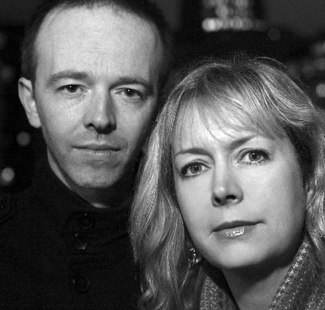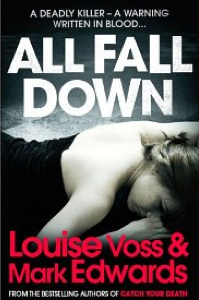Self-Publishing Success Stories: The Anatomy of a Kindle Bestseller
Writing for writing’s sake is absolutely brilliant, but many of us have ambitions to be #1 on the Amazon charts, selling hundreds of thousands of books and raking in the cash!
 There’s nothing wrong with ambition, especially when others have walked the path before us. Today, #1 Amazon UK bestselling author Mark Edwardsexamines some of the characteristics of what goes into a Kindle bestseller.
There’s nothing wrong with ambition, especially when others have walked the path before us. Today, #1 Amazon UK bestselling author Mark Edwardsexamines some of the characteristics of what goes into a Kindle bestseller.
As self-published authors we are all inspired by the sight of other indie writers tearing up the bestseller lists, rolling in royalty checks, getting big bucks movie and book deals, and achieving all the things we fantasise about in those misty moments when we raise our heads from our keyboards and allow ourselves to dream.
Personal experience
I was one of those fortunate writers who has achieved self-publishing success. In 2011, my writing partner Louise Voss and I hit No.1 on Amazon.co.uk and sold just under 100,000 ebooks.
This wasn’t dumb luck, but the result of a strategy, based on years of marketing experience. I have identified seven factors that can propel a book onto the bestseller lists if you can get them all lined up and firing. But before talking about me, I want to look at another self-published success story.
Amazon UK recently released a list of the ten biggest-selling self-published books of 2012. At No.2 was Only the Innocent, a mystery novel by Rachel Abbott, which had hogged the top spot on Amazon for a month early in the year, selling 100,000 copies at a price that earned Rachel the 70% royalty rate. She has now teamed up with Amazon who are publishing Only the Innocent in the US while Rachel remains independent in the UK.
How Rachel Abbott hit #1 on Amazon
Rachel is refreshingly open about how she did it – and the first part of that was about getting the basics right: a gripping book with a strong concept; an evocative and professional-looking cover; and an excellent book description that makes you want to read the book.
Next, Rachel did something very simple but vital: she wrote a marketing plan. Then she carried that plan out. This does not sound remarkable but you’d be amazed how few writers – and publishers, it has to be said – bother to do this. But if you are serious about success, you need a plan and you need to stick to it. Or rather, you need to follow your plan, doing more of the things that work, and less of the things that don’t. (That’s the secret of marketing, by the way.)
What were some of the things that worked for Rachel?
Selling ebooks is all about exposure – it isn’t true that good books will naturally rise to the top. You have to get them noticed. So Rachel focused on getting her book seen, and to do this she did two things.
Firstly, she used Twitter to get word of her books out there. She didn’t just set up a Twitter account and start banging out links (because that’s a waste of time). Instead, she used tools and services like Tweet Adder and Triberr to increase her exposure. Triberr is interesting because it’s like a club where Twitter users get together to retweet each other’s posts, thus greatly increasing exposure.
Her approach to getting reviews was professional and clever. She identified the blogs and sites that she thought might review her book, then created a template that she sent to the review sites clearly and politely requesting a review. I am sure that if you run such a site, and are inundated with amateur requests, receiving something that looks professional and sane will stand out. It’s like receiving a great covering letter and resumé from a job candidate.
The effect of the social activity and picking up reviews was to slowly build sales – with the aim of getting noticed by Amazon. This tallies with my own experience. I realized very early on that the best way to sell books was to get onto the ‘also bought’ bars of popular books. Short of getting into the Daily Deals or being chosen by Amazon for a featured list, the ‘also bought’ bars are the most important pieces of real estate on the site. If you can get among the first books on the ‘also bought’ bar of a top ten book, your book will also follow it up the chart. Guaranteed.
It’s like pushing a boulder up a hill.
All the effort goes into the ascent – the slow, tortuous climb to the top, one step at a time. Every sale takes you a little further up that hill, and more likely to get picked up by the magic algorithms. Then, if you have done everything else right – the cover, the description, garnered good reviews – the boulder will grow lighter and easy to push. Then – when you get picked up by the algorithms and gain exposure – you can let go of the boulder and let Amazon do all the work for you!
My strategy was very similar to Rachel’s, except I didn’t use Twitter to reach readers (I used it, as I still do, to network with potential influencers, the bloggers and journalists and other writers who can help you gain exposure).
Using blogging to get noticed
My strategy was to set up a blog – IndieIQ.com – on which I interviewed the most popular self-published authors I could find. My belief was that if I interviewed someone with a large following, those followers would come to my blog to read about their favourite author, and maybe check out my books as a result. I also did everything I could to get onto other blogs and sites.
I made sure that Killing Cupid and Catch Your Death both had strong, eye-catching covers and great descriptions, and emailed everyone I could think of who might give the books a mention. One day, after doing this for months, sales suddenly took off – because the algorithms had kicked in. At that point, I tweaked the description of Killing Cupid and sales doubled immediately.
So what are the lessons that self-published writers can learn from my and Rachel’s experience?
Here are my 7 take-home tips.
- Design a cover that tells the reader exactly what kind of book this is and that looks professional.
- Write a book description that makes the reader desperate to read it.
- Write a marketing plan and carry it out – adapting it as you go along to do more of the stuff that’s worthwhile and none of the stuff that isn’t.
- Instead of sending out endless links to your own followers on Twitter, try to get retweets – reach your audience’s audience.
- Contact, in a friendly and professional way, every single person and website you can think of who might want to give you exposure – and give them a good reason for doing so.
- Associate with successful writers – learn from them and get in front of their fans.
- Be prepared to work damn hard!
You can download my free guide to writing a sizzling book description from IndieIQ – and I am currently accepting new clients. I can write a great book description for you or critique your current one. Contact me for full details.
* Listen to an audio interview with Rachel Abbott here on how she used reviews and social media to get to the top of the Amazon charts
What questions do you have for Mark in terms of how he and Rachel hit the top spot on Amazon? Please do leave them in the comments.
 Mark Edwards is the co-author, with Louise Voss, of thrillers Killing Cupid and Catch Your Death, which were originally huge hits when self-published in 2011, leading to a deal with HarperCollins.
Mark Edwards is the co-author, with Louise Voss, of thrillers Killing Cupid and Catch Your Death, which were originally huge hits when self-published in 2011, leading to a deal with HarperCollins. Their third novel, All Fall Down, has just been published. Having worked in marketing for years, Mark also runs IndieIQ.com and offers services to writers including writing book descriptions. He can be found on Twitter @mredwards.
Their third novel, All Fall Down, has just been published. Having worked in marketing for years, Mark also runs IndieIQ.com and offers services to writers including writing book descriptions. He can be found on Twitter @mredwards.
Rachel Abbott is re-releasing Only The Innocent in Feb 2013.
To read more about this duo click on the link below....
No comments:
Post a Comment